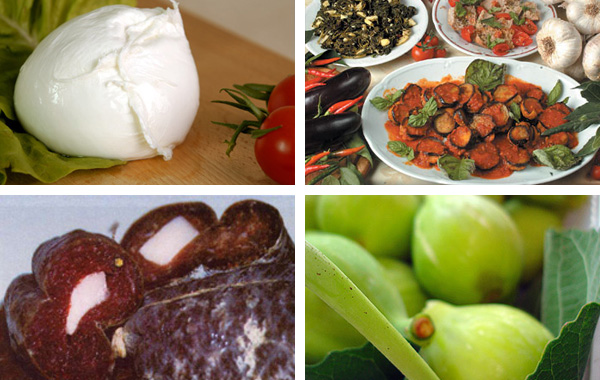
Gastronomy in Cilento bounces back and forth between land and sea. These are anchovies, known as “di
menaica”, so called by the name of the network that is used to catch them. The land, on the other hand, is
represented by cacioricotta of Cilento (a hybrid between caciocavallo and fresh ricotta), made from the milk of local
goats, and “caciocavallo podolico” (that particular variety of cheese produced exclusively from the milk of
“podoliche” cows , in the traditional way and only in specific times of the year). And still the tradition
of stuffed vegetables such as eggplants and zucchini, legumes soups, homemade pasta. Among the typical products is a
must to include the white fig of Cilento, the honey, the brawn of Gioi, the wine, the mozzarella cheese
“co' a mortedda” (with the myrtle). Above all these products drifts a culture of olive trees and
oil, an ancient tradition able to certify a high quality.
Many of these products have been elected as Slow Food Presidia to indicate their quality and excellence. The Presidia fall
under the more general activities of the Slow Food which promotes a new philosophy of pleasure and a programme of taste education
against the approval caused by the fast food.
Moreover, the good quality of our products had already been discovered by the American scientist Ancel Keys, who,
during his stay in Cilento in the '60s, coined the definition of the concept regarding the “Mediterranean
diet”, indicating an eating model considered the most suitable dietary lifestyle to ensure (grant) health to
people on the basis of a rich and balanced food regime.
Today, the Mediterranean diet has rejoined the intangible heritage of UNESCO for its cultural value based on respect for land
and biodiversity, and conservation and development of traditional activities and crafts related to the fishing and
agriculture.
First traditional dietary practice in the world to be included in the prestigious List.









